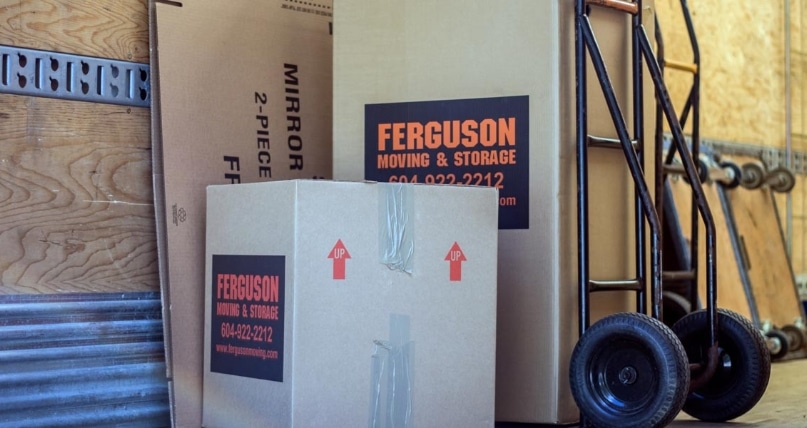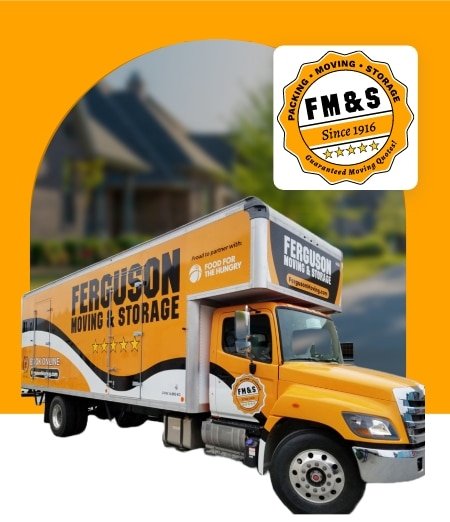- BC Mover Locations, Office Moving, Relocation Moving
Moving A Coffee Shop Or Cafe In Vancouver

When you run a commercial retail food establishment, moving is not as simple as when you move house. And it’s also quite different than moving an office or other type of business. Before making the decision to move – if you have the choice – you’ll want to realize how many parts of your business can be affected. Your list of things to do will be vast – probably more work than when you set up your business to begin with.
In this article, we’ll go into some considerations when doing a commercial move for a coffee shop or cafe in Vancouver.
Licensing your coffee shop or cafe when you move to a new municipality.
If you move your coffee shop or cafe to a new city or municipality, your licensing fees and terms may change. Different cities in Metro Vancouver will have different rules for businesses. Be sure that you have the appropriate license to operate, before you open at your new location.
Marketing material updates when you move a business.
As we discussed in our article on preserving SEO when you move a business, your address updates will be important. This is not something you want to leave on the back burner. You’ll want to change your address on all your marketing material, and all website mentions. In today’s age of Yelp searches for local eats, you can’t afford not to do this for a coffee shop or cafe business that is moving.
To avoid confusion, also update your print material (such as business cards) or any paraphernalia.
You may also want to alert local newspapers, in the hopes you can get some press coverage out of it too.
Send out an e-newsletter, if you have one, to let your subscribers know where to find you at your new location.
Of course, for practical reasons, you’ll also need to update your address with all your service providers, suppliers, banks, licensors, insurers and so on.
Moving your cafe or coffee shop equipment and re-installing at your new location.
It’s probably a fair guess that your operating equipment will be the biggest headache when moving a coffee shop or cafe. Moving a commercial espresso machine, for example, can require ensuring proper water and electrical hook-ups at your new location.
You may need a professional to come and install the espresso machine. And, while you’re at it, any maintenance that needs to be done should also be checked when it arrives at your new location. You’ll want to ensure all working internal parts are still functioning after transport, and before you open.
This article explains how to clean a commercial coffee machine.
We also have articles on our blog for moving household appliances. While moving commercial appliances may have more implications, you can get a read up on some basic principles regardless:
Moving Large Appliances: How To Move A Deep Freezer
Moving large appliances: How to move a Refrigerator
Moving all your cafe food items.
Moving food for a commercial business can be harder than moving food in a household kitchen. In our article on this topic, we talk about minimizing food you’ll take with you by using it up before moving day. But when doing a commercial move, your focus will be on minimizing the days your coffee shop or cafe has to close for business. You will, at the same time, not want to run out of supplies to meet your current customer demands in the days leading up to the move. Also, large inventories can’t just be thrown out without costing you a lot in operating budget.
Considering that this will likely be a short distance commercial move, you may have no choice but to take your food stuffs with you, if possible. Take advantage of commercial packaging of unopened items, and move them safely in your car. Unfortunately, moving companies often can’t move food for you (plus the weight of doing so may not be worth it). So you’ll likely end up doing this yourself.
In the time leading up to the move, ask your supplier to deliver part of your inventory to the new location, if there is any possibility of doing so. If your new location will be undergoing renovations before moving day, you won’t want food sitting in the way.
Refrigerated items will need to be handled carefully. Remember your food safety rules for things like milk and frozen foods. Do not let them cool below their recommended storage temperatures!
For coffee, flour and dry goods, be sure you won’t be storing them in moisture-rich areas where condensation can build up and ruin them. Stale or mouldy ‘dry’ foods are not great for business.
In the event you can’t transport your food inventory, consider donating to a local food bank or charity. The rest will have to be tossed out.
See related: Packing food for donation
Costs of opening a new space for your food establishment.
This article describes the costs of opening up a coffee shop from scratch. While most of those initial costs will simply transfer over to your new location, you won’t want to forget that your new location may come with new budget necessities. Your new lease, for example, may not be the same as your old one. And foot traffic can also change, affecting your profits.
There will also be costs to set up your POS system at a new location, transferring Internet and phone hook-ups, and other utilities.
Aside from that, your new space won’t be outfitted the way your old place was. This can be good or bad. Either way, you have an opportunity to re-decorate (and possibly donate old furniture to charity!). And that can involve more purchases. If you need more tables and chairs, lamp pendants, or new flooring – it can all add up. If you decide to install new commercial appliances because of space allowances, consider how that can affect your utility and maintenance bills in the long run (weighing out the benefits of profitability, of course).
Anything that happens to get damaged along the way during this commercial move will need to be replaced. Ensure your professional moving company has insurance for the items they will be transporting. If you move items yourself, see if your business insurance will cover it, just in case.
See this page with videos on how to move espresso machines, if you choose to ship them to your new location.
See our article on how to detach and reuse wall items when moving so you can take these things with you from your old space to your new one. If you have fancy lamps or chandeliers you’ll take with you, see our article on preparing these items for transport.
Also, since you’ll be moving computer equipment, you’ll want to ensure you have backups of all your data – no insurance company can help you retrieve years of records on your hard drive, if it gets lost along the way. See our article on moving an office in the digital age for more on this topic.
Hiring and training new employees.
Depending on how far you move, your new location may be a dealbreaker for existing employees. And, even if they all go with you, your new location may get busier, or have longer opening hours, thus requiring more staff.
Hiring and training new staff is time-consuming and costly. Be sure to plan ahead for this before you move your business. Try to get existing staff to let you know well in advance if they will be able to commute to the new location, and possibly to work the extra hours.
Hire a trustworthy, professional commercial moving company.
During the move of your coffee shop or cafe, you’ll be researching trustworthy commercial moving companies. While you may call us biased, we will toot our own horn anyway. Remember that moving companies should always do in-person estimates, and never give you a price over the phone. This ensures you are not overcharged due to any miscommunications about the scope of the job. As an additional protection to your budget, our company provides flat-rate service fees for moving. Ask us for details!

Categories
Moving Tips

This is the heading
Lorem ipsum dolor sit amet, consectetur adipiscing elit. Ut elit tellus, luctus nec ullamcorper mattis, pulvinar dapibus leo.

This is the heading
Lorem ipsum dolor sit amet, consectetur adipiscing elit. Ut elit tellus, luctus nec ullamcorper mattis, pulvinar dapibus leo.
We make moves easy for you.
- Local Moving
- Long Distance Moving
- Seniors Moving
- Piano Moving
- Item Relocation
- Overnight and Long-term Storage
- Packing Supplies





